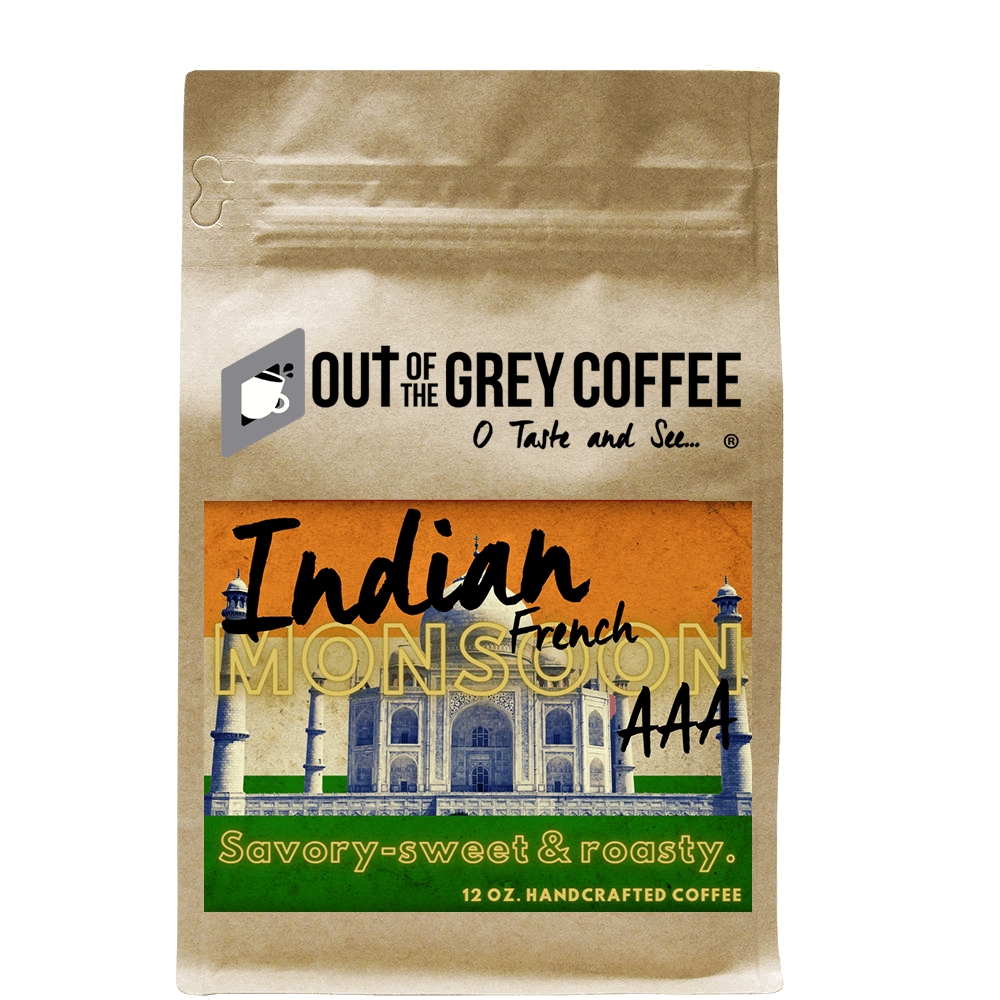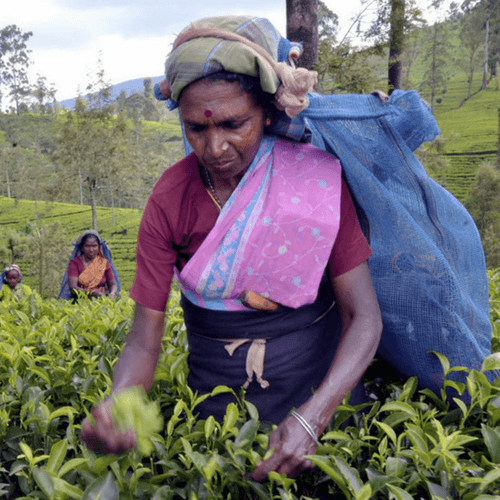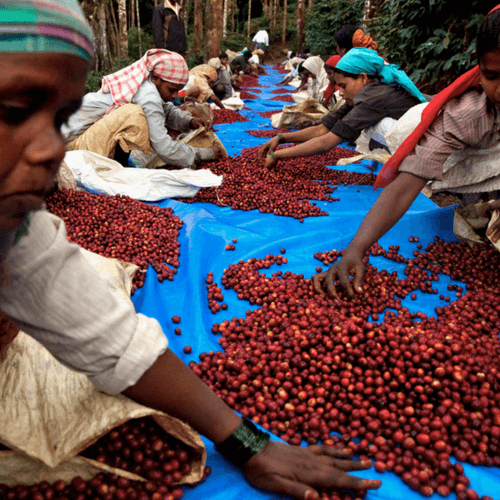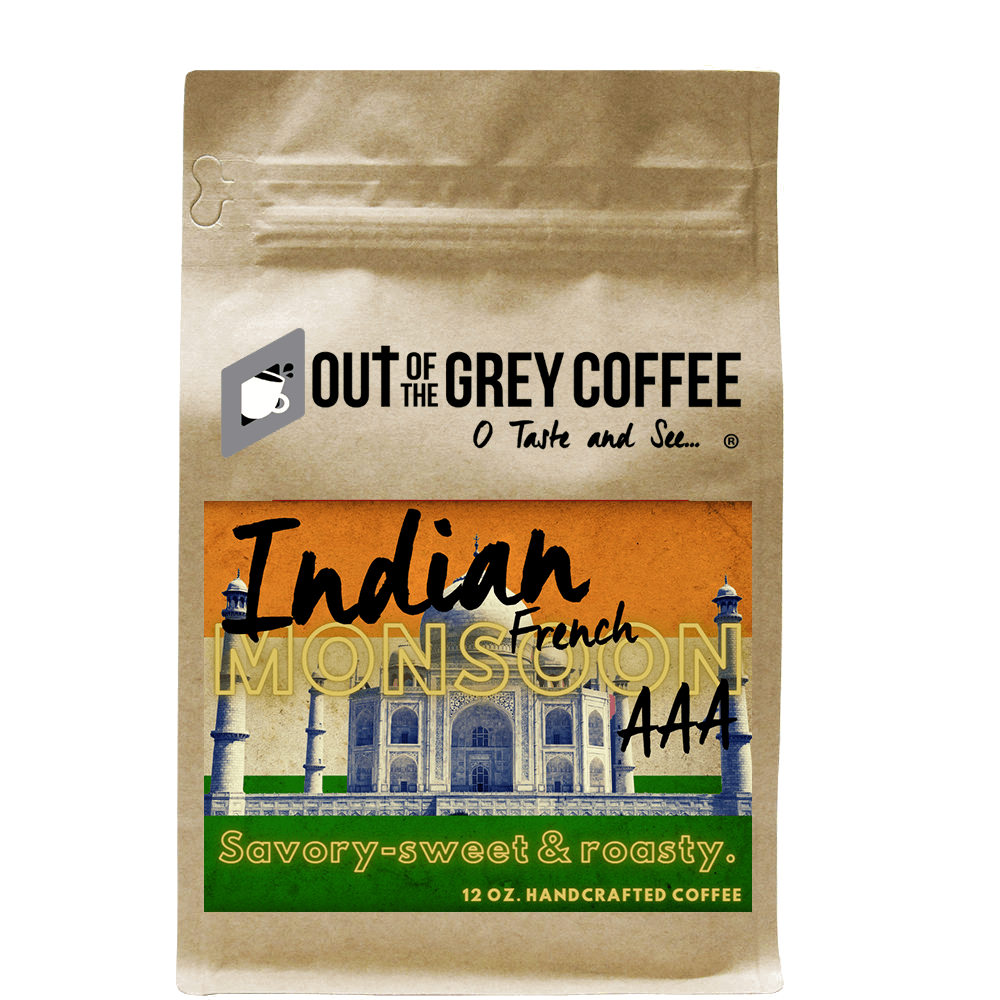



Single Origin - Indian French Monsoon AAA - Specialty Coffee
$22.99 - $23.48
Savory-sweet, roasty, dark chocolate, scorched mesquite, orange zest & ripe peach flavors with syrupy mouthfeel and heavy salted caramel finish.
Roast: Dark
Processing: Monsoon
Altitude: 1200 - 1300 M.A.S.L.
Harvest: December - January
12 oz. Handcrafted Specialty Coffee
ootgCoffee began sourcing coffee in India over 7 years ago, importing Monsoon Malabars. We appreciated the chocolate, earth, and spice notes for anchoring traditional espresso. As India’s specialty industry has developed, we’ve refocused on the country, consciously sampling more microlot and Plantation A coffees and importing select offerings.
As ootgCoffee expands sourcing throughout more producing regions, we find ourselves considering farms that, in previous years, would not have been considered a specialty source. Forward-thinking producers have been challenging the industry’s conception of what good coffee is and where it comes from, changing the landscape. We look forward to creating more relationships in India with the goals of meeting more producers, cupping more samples, and exploring the specialty coffees that await us in this beautiful country.
HISTORY
Coffee is said to have first been brought from Africa to India in the 17th century. According to legend, a Sufi saint named Baba Budan encountered coffee during his pilgrimage to Mecca. Locals there were proud and protective of their coffee plants and prevented anyone from taking seeds to be planted outside of Yemen. Baba Budan was determined to share coffee with India, though. He hid seven seeds in his beard, discreetly escorting them through the port and planted them in the hills of the Karnataka region.
In the 1800s, the British established commercial coffee plantations in the southern regions of India, and coffee production grew exponentially. Early on, Arabica was the most popular export, but Robusta has taken over as the predominantly grown species due to struggles with leaf rust, white stem borer infestation, and climate change. Robusta now makes up over 70 percent of India’s coffee production, although there are producers maintaining and revamping the tradition of growing Arabica.
Today, India is the sixth largest coffee producer in the world and grows some of the most genetically diverse coffee due to the country’s historical dedication to proactive breeding. Climate change is an immediate threat to India’s coffee farms. Once-consistent monsoon seasons and rainfall amounts have been shifting. Coffee-growing regions are facing increasingly challenging periods of drought or heavy flooding and temperature change. In response, India has been a leading force in developing solutions by improving irrigation systems, avoiding pesticides that lead to soil erosion, and using organic fertilizers.
PROCESSING + MONSOONED COFFEE
Both washed and natural processes are practiced in India. Around 80 percent of Arabica and 20 percent of Robusta are washed processed. Natural and honey coffees are also common, though. Natural coffees are spread on raised beds and dried under 50 percent shade. This process typically takes around 25 days to reach the desired moisture content. Yellow, red, and black honey processes are also seen. In these processes, cherries are depulped without the use of water so that some mucilage remains on the coffee. These are then dried on beds in 50 percent shade for about 18 days. The type, yellow, red, or black honey, is determined from the initial BRIX readings and the timing of stirring the coffee while drying.
India has been long known for its monsooned coffees. “Monsooning” is a process that resulted from sailing coffees to Europe, a journey that typically took about six months. During this time, the coffee was subject to monsoon rains and high humidity, which caused green coffee to turn golden-yellow in color and acquire a unique flavor profile. When sailing ships switched to steamships and the Suez Canal opened, the shortened shipping time eliminated this natural occurrence. Consumers had grown to enjoy the flavor of monsooned coffees, though, so India took the opportunity to recreate the process synthetically in factories. Now, coffee is spread out on large covered patios or in warehouses for a week's time so that it can absorb the ambient moisture in the air. After one week, it is re-bagged and stacked for the next week. This process is repeated over six or seven weeks until the coffee changes to a golden-yellow color. It is then considered to have been fully monsooned to give it the characteristic flavor associated with this process.

